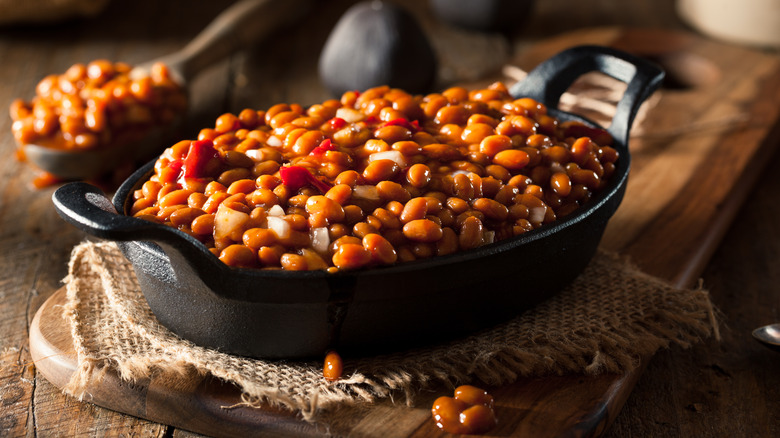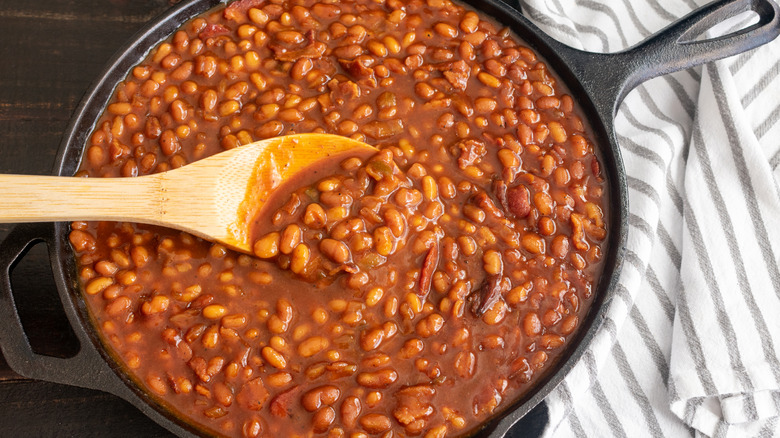Why Boston Baked Beans Are So Popular For The 4th Of July
As much as the Fourth of July is about celebrating American independence with fireworks and parades, the holiday isn't complete unless you eat at least one hot dog, red, white, and blue cupcake, slice of watermelon, or serving of Boston baked beans. You can find many of these same foods at any other picnic or barbecue. However, Boston baked beans outside the Fourth of July aren't exactly the most common cookout food.
So why then is this dish associated with the American holiday? The reason is simple: Boston baked beans are one of the earliest staples of American cuisine, which likely means they were also eaten on the first Fourth of July back in 1776. According to Serious Eats, it was the pilgrims that brought baked beans to America. The recipe that came to be known as Boston baked beans was inspired by similar dishes originating in Tuscany, Languedoc, and Portugal. They were eaten throughout New England and eventually shared across the colonies, giving Boston the nickname "Beantown." Boston baked beans are as American as it gets, so it's only fitting that they would be served on the Fourth of July.
How were Boston baked beans originally made?
Today you can find plenty of recipes for Boston baked beans — even ones sold by the can — but the original recipe for the Fourth of July staple may be the best. After all, people were eating it well before America was even independent. One early recipe, Serious Eats shares, comes from 1896's "The Fannie Farmer Cookbook."
Per the instructions in the text (via Bartleby), it starts by soaking dry pea beans in cold water overnight. The next morning, the water is drained and replaced, and the beans are boiled until the skin comes off. Afterwards, a slab of salt pork is seared, scraped, sliced, and put at the bottom of the pot with the rind exposed. Salt, molasses, and sugar is then poured over along with enough boiling water to cover the beans. After placing in the oven, the beans are left to bake for six to eight hours before they're ready to serve on Fourth of July.
Not only is the time-tested recipe a tasty part of history, it's also a great way to keep American culinary tradition alive every July.

